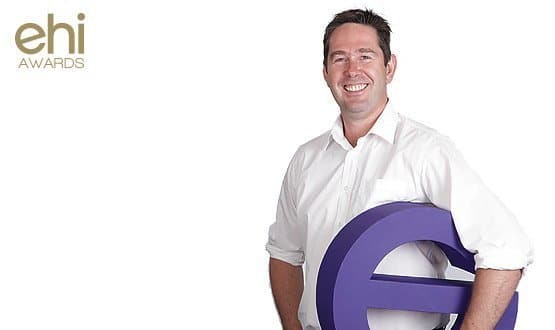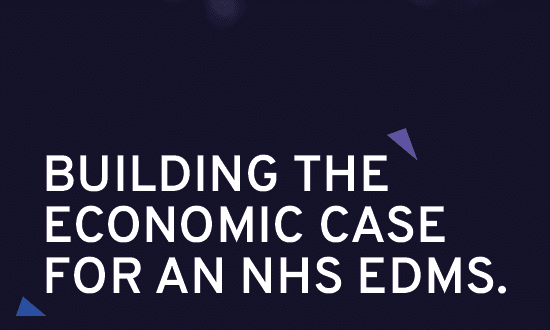Scan and deliver
- 15 April 2014

Clinicians at Aintree University Hospital NHS Foundation Trust would often complain that searching for patient information in paper records took them too long.
In the course of providing acute and non-acute services to some 330,000 local residents, and specialist services to 1.5m more across the North West and North Wales, staff had to handle as many as 4,200 paper files each day.
“With over 1m volumes of patient records occupying around ten miles of shelving, we were bursting at the seams with paper,” says Professor Mike Pearson, consultant physician and head of clinical evaluation at Aintree. “Needless to say, this involved a vast exercise in managing the library and a lot of expense in storing it.”
He says the answer was to convert the trust’s legacy patient records and paper-based processes to an electronic system; one that provided a platform for the future and had clinical support.
Other trusts have made similar investments in electronic document management systems, but Aintree took a unique approach to thinking through how it would scan, retrieve and make use of its electronic documents.
“Other trusts have digitised their records by simply scanning them page for page in a sequential order, and that’s fine up to a point,” Professor Pearson says.
“But faced with a patient, a clinician doesn’t have time to sort through several hundred pages. Finding a way of indexing those notes – so that they can quickly find the bits relevant to them – was therefore a huge challenge we had to overcome.”
Time-saving solution
After reviewing possible solutions, Aintree opted for CCube Solutions’ electronic document management software, together with outsourced scanning services from Capita Total Document Solutions, powered by Kodak production scanners and imaging software.
In the process, it became the first NHS trust to successfully use forms recognition technology, including optical character recognition, to automate the process of recognising pre-printed forms – which make up 95% of a paper file.
This means that the contents can be correctly indexed in the digital record, even if the forms have been incorrectly filed in the physical record; without staff having to manually scour the contents.
Patient records are scanned by Capita and securely tranferred to Aintree where they are optically character recognised, automatically indexed and then uploaded to the system ready for clinicians to access. Notes are now accessible 24/7 to around 3,000 health professionals on a daily basis, as well as from offsite.
Professor Pearson believes the way clinicians interact with the new system has truly revolutionised their daily routine. He says all consultations are now electronic and very little paper is used anywhere in the organisation.
“Optical character recognition identifies all the wording in case notes and from that we can identify specific forms for specific clinicians.
“For example, the system can recognise an ecocardiogram sheet from the words on it; so, if a clinician wants to consult an ecocardiogram, he or she can now find the results with just three or four clicks. Each specialty is given the opportunity to customise their needs into this package.”
Moreover, the system speeds consultations, says Professor Pearson. “When preparing patient notes for a clinic, the clerk now bookmarks the last time the clinician saw each patient.
“The clinician then simply opens the EDMS package, clicks on a patient and the system takes them straight to where they need to be, so the consultation can get underway immediately. It’s this attention to detail which makes the project viable; without it, there’s an awful lot of searching and clinics just slow down.”
Cash savings
The financial benefits to Aintree have also been huge. For an initial investment of £1.5m, the trust says it has freed up significant revenue and valuable estate for use in clinical care.
While the primary driver behind the project was patient safety and care, operational costs have been substantially reduced. Indeed, the trust expects to save around £1m annually by closing its traditional paper library, redeploying staff and eliminating the transportation costs associated with moving thousands of patient files around the organisation each day.
Aintree has also gained 30% additional space – a whole floor – in a £45m new building, which is now used for clinical activities rather than storing paper – a £13.5m estate benefit.
“The savings have come out of non-clinical budgets and the project has not reduced our clinical spend at all,” says Professor Pearson. “Indeed, some of the efficiencies that will come from having data instantly available 24/7 will be realised for many years to come.”
Replicable system
Aintree now has an electronic system that clinicians find much more navigable than paper – and four years ahead of health secretary Jeremy Hunt’s "paperless NHS" deadline. What’s more, the system is eminently copyable by other NHS trusts, according to Professor Pearson.
“What’s important is to ensure that your clinicians, clerks, operational staff and technical team work together. But there’s nothing within our system that could not be replicated in any other busy hospital,” he adds.
“Good records management is two things: having the records available 24/7 – and being able to get what you want from them. I’m delighted that we now have a system that allows us to retrieve the knowledge stored in those records in real time.”

The EHI Awards 2014 have more categories than ever before to recognise the great work being done by healthcare IT teams across the country.
This year, there are 14 categories, the full details of which, along with information on how to enter, can be found on the dedicated awards website. Entries must be received by 9 May.
For information about sponsorship opportunities for the awards or to book tickets, contact EHI’s events team on 0207 785 6924.




